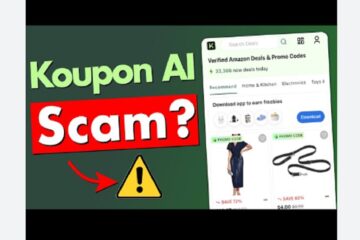A series of emotional posts asking for help to locate the 36-year-old Brian Posch have circulated Facebook in recent weeks. The posts claim that Brian was gone for a while “yestarday” after his truck was discovered with a baby girl in it. While the story pricks the heartstrings, it’s completely false. Let’s discover the truth behind the scam.
Brian Posch missing person posts typically contain:
A call urgently for “HELP FIND HIM”.
Specifics such as “36-year-old Brian Posch” and “He is 5’9” and 165 lbs”.
An endangered “silver alert” issued.
A share call saying “ONLY TAKES 2 SECONDS”.
This formula blends urgency with specifics, authority and ease of aiding. It’s designed to maximize emotions and shares.
The posts are shared in local buy/sell forums such as “Stuff For Sale”, making them appear legitimate and targeted. However, they are only aimed at certain audience.
Brian Posch Scam
Detailed Overview of The Brian Posch Facebook Scam
The frequent Brian Posch missing person scam is a classic example of scammers creating false urgency through social media. Through the fabrication of an emotional story and then posting to the local community, scammers trick thousands of people into sharing and engaging.
ALSO READ
Cybershopo Review: Cybershopo com – Scam or legit?
Pawpawer Review: Pawpawer com – Scam or legit?
Ociffee Review {2024}: Is Ociffee com Legit or a Scam?
What To Do If You Shared The Brian Posch Post
If you have already have shared the scam Brian Posch missing person post Here are some helpful actions:
Take action to delete your shares immediately so that you end the spread of scams.
Share your initial share to call it an e-mail scam and inform your users not to share more.
Contact the fake post on Facebook to be removed.
Groups that have distributed the fake post, since they do not have proper moderation.
Be wary of new popular posts from groups that you’re in.
Remind your friends to exercise some scepticism before sharing any emotional viral content.
While your intentions were great deletion of your post and notifying others helps stop the spread of scams. Take action to stop the scammers from taking advantage of even many more people.
These are the main factors that allow the spread of this fraud:
Crafting An Emotional Story
The scammers have spent years creating heart-wrenching details
Brian is 36, and has the birth of a daughter, another reason to get involved.
The man disappeared suddenly urgent action is required immediately.
The truck was discovered by the child with him, yanking at his emotions.
A mention that there is “EXTREME danger” and needing “medical assistance” creates worry.
The emotion that drives people to be excited about finding Brian before they can think rationally.
Fabricating Authentic Details
Particulars such as Brian’s age and weight, height, and the date of his location give the impression of authenticity. People are able to trust information that is precise.
Of course, these facts are inventual. However, they do not allow immediate doubt.
Spreading in Targeted Local Groups
The postings in hyperlocal groups make Brian appear as a genuine part of the community. There is a sense of obligation to assist anyone who is “local”.
It also gives an unaffected audience that is susceptible to manipulation.
Pressure to Share Immediately
The phrase “takes 2 seconds to share” hinders criticism and critical thinking. It triggers a rapid emotional response to share.
If shared in groups, family and friends are aware of it and will share it with others spreading the fraud.
Hook of a Missing Baby
The fact that the baby is missing creates tremendous emotional tension. The parents imagine their baby in danger, and are compelled to act immediately.
This distracting factor can override logic, such as researching news or facts first.
Appearance of Authority
An officially-issued “silver alert” lends credibility to the claim. It is assumed that authorities have had already vetted the information.
In reality, no alert exists. This fact discourages doubt.
This powerful combination of psychological manipulation, authentic-looking information, community-based relevance, power, and urgency makes this scam extremely easily shareable. It capitalizes on the humanist trends.
How Does The Brian Posch Missing Person Scam Actually Work?
Though it is cleverly designed for virality this scam does not have any goal of locating an individual who is missing. The steps are as follows:
1. Scammers Join Local Facebook Groups
The fraudsters target local populations by registering in appropriate Facebook groups. This includes moms’ groups, neighborhood organizations, etc.
When people think of an affiliation with a local community and feel more compelled to share the article.
2. Crafted Story Sparks Immediate Concern
When a group is created there is a post by scammers concerning Brian Posch missing. The information sparked immediate concern and a sense of urgency among the group members.
Naturally, people want to help those they consider to be a local father and child in danger.
3. Rapid Sharing Spreads The Post
The emotional demand for action is rewarded with rapid shares from members of the group. Sharers’ family and friends can also view and share the article.
Within specific groups The spread of the virus is triggered when more people opt in love with”the “urgent” story.
4. Increased Visibility Hooks More Victims
As the sharing rate increases and the posts that are fraudulent begin spreading on Facebook to non-members of the group.
The way that these posts are, they convince that more people Brian Posch must be real and must be found urgently.
5. Scammers Leverage Engagement For Profit
With a viral blog post they can profit from the large and engaged public to make a profit.
They can alter posts to advertise products, share affiliate links, gather information, or sell on the page. Engagement alone is attractive.
6. There Is Never Any Missing Person
While some claim sharing can aid in the search for Brian Posch, he is not really missing. Nobody has ever been discovered.
The fraud is based on empathy to lure thousands of people into sharing viral posts. Engagement is the sole goal.
This psychological manipulation is responsible for an alarming spread of the fraud through Facebook groups, and even beyond. However, some warning signs may aid in identifying the scam.
Recognizing Warning Signs of The Scam
Although these posts are based on human desires, certain indicators could indicate their deceitful nature:
There is no credible news coverage. There are no credible news reports in the case of “Brian Posch missing”. Silver alerts with real value get media interest.
There are no details about the alert The alerts mention “silver alert” but provide no details on the person who issued it or a specific number for the alert.
There are no instructions other than sharing. Genuine missing appeals give precise instructions for whom to call. They simply state “shares help!”.
A name and a photo There is no evidence of authentic particulars like the home city or family members, work place etc.
Posts on groups that are not related Local sales groups are not a valid reason to publish an alert to the public about missing persons.
Duplicate posts are likely. If you notice several instances of the same Brian Posch post, it’s certain to be a fraud trying to expand its reach.
There is no need to provide evidence. Missing alerts that are real ask for any information, sightings or proof by the general public.
Being aware of the warning signals is essential. Consider your reaction before you react to any viral missing persons requests on Facebook. First, check the appeal.
Avoiding Future Missing Person Scams
Here are some tips to be vigilant of posts similar to those that are fabricated. Brian Posch story:
Take a moment before sharing information – Allow yourself the time to check the facts, regardless of how urgent. Do not react immediately.
Search for news articles The legitimate missing cases will be reported in local news media as well as the police. Scams can be found in isolation on Facebook.
Check the details: Search for the person’s name, address as well as the official involved. Fakes aren’t resistant to examination.
Examine group relevance – Ask what makes groups that aren’t related, such as local sales sites would issue a missing alert that is public.
Check for duplicates. Scammers duplicate posts within groups. A number of instances suggest a scam.
Contact the poster’s original poster. Message the poster to get more information. A lack of response or ambiguity is a sign of that you are in the middle of a fraud.
Use official sources to get information about missing children from sources like the National Center of Missing and Exploited Children.
Report suspicious posts on Facebook – Make use of Facebook’s tools to report any posts that appear fraudulent. This will help to stop fraud.
Be vigilant and you can limit the effects of fake viral content. We all want to assist individuals who have disappeared, but checking prior to sharing is crucial.
Frequently Asked Questions About The Brian Posch Missing Person Scam
1. Who is Brian Posch?
Brian Posch is a fictional persona created by fraudsters to create fake missing person accounts. He isn’t a genuine missing person. The posts make use of the fake name and image to make it appear genuine and emotional.
2. What are the implications of Brian Posch missing posts say?
The posts tell of the 36-year-old Brian Posch suddenly going missing. They provide details such as his weight, height, age and a baby daughter who was as well, which creates a sense of an atmosphere of urgency. The posts ask readers to share the information to assist in “find” Brian.
3. Where are these posts appearing?
The fake posts are posted within local Facebook communities, such as local pages and neighborhood groups, mothers selling groups, ‘groups and so on. These posts target local communities who are more likely to share posts from missing people in their local area.
4. What’s the goal of this fraud?
The only purpose of this is to create reactions, shares and comments through making use of humanistic impulses. There isn’t a missing person. The engagement is a way for scammers to make money in the future.
5. How do I identify these posts are not genuine?
The warning signs are: absence of news reports, insufficient information, irrelevant groups for posting the pressure to share rather than guidelines, duplicate posts, and there is no demand for evidence from the public.
6. Do I need to do in the event that I share one of these articles?
Remove your share as soon as possible so that you don’t aid the fraudsters. Comment on the post that it’s fake. Report the message to Facebook. Stop groups that support the use of such frauds.
7. What can I do to avoid getting swindled by similar frauds?
Always verify the details such as news reports, look up the source Check the relevancy of the group and contact the poster check at duplicates and look for official missing child resources prior to sharing.
The Bottom Line
The frequent Brian Posch missing person scam shows how easy it is to create false urgency through social media using emotional hooks and local posts.
It capitalizes on humanistic tendencies by creating a genuine-looking, but totally fake story. Its sole purpose is to make money and engagement rather than finding the missing person.





